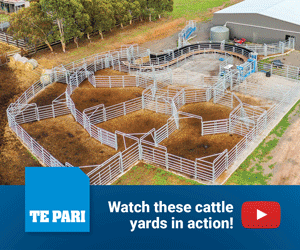Wagyu Feeder Prices: A Year of Challenges and Recovery
The year 2025 has proven to be an uphill battle for F1 Wagyu feeder prices, facing obstacles such as diminished economic confidence in key markets, surplus supply, and various other challenges. In a surprising turn from historical data, F1 Wagyu feeders have been valued less than Angus for extended periods this year. However, recent trends suggest they may finally be rising from this slump.
For over 14 years, Beef Central has tracked Wagyu feeder prices through detailed surveys of premier F1 to Fullblood Wagyu beef lot feeders and supply chains across major production hubs in Queensland and New South Wales.
 According to quarterly feedlot surveys, long-fed Wagyu-influenced cattle constituted about 10% of national feedlot capacity during the June quarter, a slight decrease from the previous year. This percentage had peaked at around 12% in early 2024.
According to quarterly feedlot surveys, long-fed Wagyu-influenced cattle constituted about 10% of national feedlot capacity during the June quarter, a slight decrease from the previous year. This percentage had peaked at around 12% in early 2024.
Traditionally, F1 Wagyu has sold at a premium of 50-100c/kg over Angus. However, industry insiders report that well-bred F1 Wagyu x Angus feeder steers were recently trading around 520c/kg, with some exceptional specimens reaching prices between 530c and 550c/kg due to their superior carcase performance.
Angus feeders have softened slightly in price, with many trades falling between 530-540c/kg, largely influenced by increased supply due to favorable dry conditions. More insights will be available in next Monday’s fortnightly feeder steer update.
Price Fluctuations: A Historical Perspective
Back in July, well-bred Wagyu F1 feeders were valued between 450-500c/kg, paralleling Angus prices of 460-470c/kg. This contrasts sharply with the situation just four months prior, when the F1 premium was under significant pressure, with prices reported at 410-450c/kg. At that time, Angus cattle were valued between 390-410c/kg, indicating a substantial recovery since then.
The price of F1 Wagyu continues to ascend since May when trades hovered around 450c/kg. Sources note that some of this increase may be attributed to supply chains responding to vendor complaints about pricing, as there was a looming risk of reverting to Angus breeding.
Unconventional Sales Strategies
There have been peculiar instances this year where Wagyu F1 feeders sold for 20-30c/kg liveweight less than Angus. Due to short supply of Angus driven by drought conditions in Victoria and southern NSW, some feedlots found themselves purchasing cheaper Wagyu F1 feeders. These animals were not directed into traditional long-fed programs but instead fed for shorter durations aimed at non-breed specific branded beef programs.
Despite the lower prices, it has been noted that the performance of the F1s may have compromised some of the expected benefits, with reports that they were often fed for an additional 20-30 days when compared to Angus in order to meet required carcase weights.
Premium Wagyu: A Growing Segment
In addition to F1 Wagyu, the market for purebred Wagyu feeders (F4 and higher) is now quoted around 590-600c/kg, while well-bred Fullbloods are valued between 720-750c/kg. Despite variations in pricing, supply for Wagyu across the board is not an issue, as Fullblood feeder numbers continue to increase.
Dynamics of Global Demand
With global beef supply currently constrained, one question arises: is Wagyu being swept along with the increasing demand for Australian beef? According to a supply chain manager, the answer is affirmative. “A rising tide floats all ships,” he stated, highlighting a noticeable demand spike in regions such as the US and Canada.
Moreover, an evolving dynamic is observed as Australian exporters have gained leverage in negotiations with customers, enabling them to standardize product specifications and enhance operational efficiency.
Conversely, another supply chain manager cautioned against drawing direct correlations between broader meat price increases and Wagyu prices, emphasizing that they operate in distinct spheres. While general meat prices are rising, it does not guarantee similar trends for Wagyu, illustrating the complexities of the market.
This article is formatted for integration into WordPress with proper HTML structure, complete with headings, paragraphs, and images for enhanced readability.



